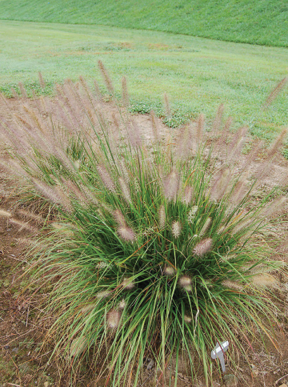
Ornamental grasses have established themselves as cornerstones of North American gardens and landscapes. Their beauty and grace is undeniable, and they are essential elements in borders, mass plantings, container plantings, and as specimens. What makes them so attractive is not only their elegant foliage, but also their beautiful and graceful plumes of flowers. What’s not as well known, though, is that even the most impressive blooms don’t always produce viable seeds, and that’s a good thing. In fact, there are numerous advantages to growing infertile grasses, which is why Emerald Coast Growers of Pensacola, Florida, has brought to market two lines of infertile Pennisetums and Miscanthus, developed by the University of Georgia’s Wayne Hanna and North Carolina State’s Tom Ranney, respectively.
In certain locations, some ornamental grasses can self-sow beyond their desired area in the landscape. This is where infertile grasses come to the rescue. The most obvious benefit of infertile grasses is that they don’t reseed in the nursery or in the landscape. For the grower, this means that it helps keep the variety true to type in container production. It is also an advantage for the consumer to help keep the variety in check in their garden and confident that the plant will remain true to name.
The other, perhaps less obvious advantage of infertile grasses is that because the plants aren’t putting energy into producing seeds, they are more vigorous, flower earlier, and produce flowers for a longer period of time.
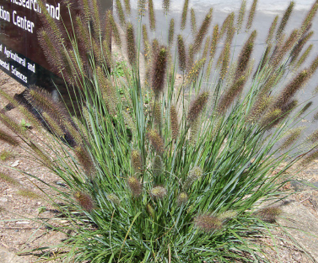
When asked what led Emerald Coast Growers to offering infertile grasses, Shannon Ballard, new plants manager for Emerald Coast, says, “We wanted to remove the concern about seed fertility in grasses. We are fortunate to work with breeders who are developing infertile Miscanthus and Pennisetums for their ornamental value, economic savings in production and performance in the garden. The ultimate reason we are offering these grasses is to be responsible in the industry. This ensures that the grower and consumer will be able to have confidence in these two genera whether they have concerns or not.”
Ballard has observed a slow and steady increase in demand for infertile grasses.
“Their popularity has mostly gained momentum with growers to have an alternative for those with concerns,” she says. “The Pennisetums’ sales velocity is increasing a little faster with container growers wanting better crop consistency. They also have great ornamental characteristics rivaling other grasses in the industry.”
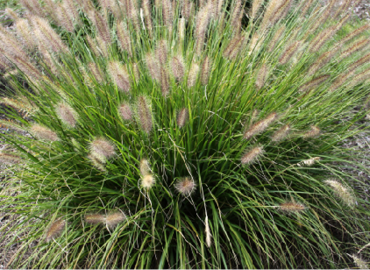
Other infertile grasses developed by the University of Georgia's Hanna include:
Pennisetum alopecuroides ‘Cayenne’ features big, dark-red bottlebrush plumes that rise above mounds of rich green arching blades with a very long bloom time. ‘Cayenne’ prefers full sun to partial shade and is hardy in Zones 5 to 9.
P. alopecuroides ‘Hush Puppy’ has long-lasting pink plumes that spray high over rounded mounds of slender foliage. ‘Hush Puppy’ prefers sun to part shade, reaches 30 inches tall and is hardy in Zones 5 to 9.
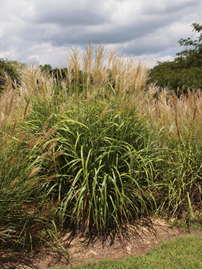
‘My Fair Maiden’
P. alopecuroides ‘Etouffee’ features light pinkish brown foxtail plumes rising over graceful arching mounds. It flowers spring to fall and forms a lovely mound that’s excellent in containers and landscapes alike. ‘Etouffee’ loves sun to part shade, grows to 42 inches and is hardy in Zones 5 to 9.
P. alopecuroides ‘Jambalaya’ grows in a lovely, tidy mounded habit to about 38 inches tall. It produces large, long-lasting silvery-pink plumes that rise above slender, upright foliage from late spring to mid-fall. It prefers sun to part shade, and is hardy in Zones 5 to 9.
P. alopecuroides ‘Praline’ features lovely soft taupe, gently upright seed heads above mounds of slender, arching green leaves. A sun-lover, ‘Praline’ is hardy in Zones 5 to 9.
Miscanthus sinensis ‘Scout’ features slender green blades with white midribs that take on spectacular fall color. It reaches a mature height of up to 72 inches in the garden and is hardy in Zones 5 to 10.Tom Ranney from North Carolina State University has also been breeding infertile Miscanthus selections. His selections include:
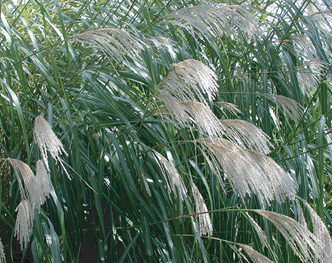
M. sinensis ‘Bandwidth’ features rich green blades with broad, bright gold bands. It forms full, compact stands, grows up to 36 inches in the garden and is hardy to Zones 5-10.
M. sinensis ‘High Frequency’ forms 5-foot upright columns of showy blades heavily cross banded with gold. It is a rust resistant Japanese silver grass. Feathery red seed heads provide autumn interest. It prefers full sun and is hardy in Zones 5 to 10.
M. sinensis ‘My Fair Maiden’ features green leaves with elegant buff-colored blooms in late summer. It grows up to 84 inches in the landscape and is best suited for full sun. It’s hardy in Zones 5-10.
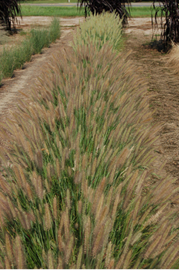
Lastly, Emerald Coast included Miscanthus x giganteus in the collection. It is a stunning selection discovered in Japan in the early 20th century with magnificent upright clumps of wide, pendant green leaves. Flower stalks soar to 10 feet, with light pink new flowers maturing to silver. A big, bold statement in any garden. Prefers full sun and is hardy to Zones 4-9.
These grasses are available as liners in 38- and/or 72-count trays. Growing requirements are the same as for fertile grass selections of the same genera.
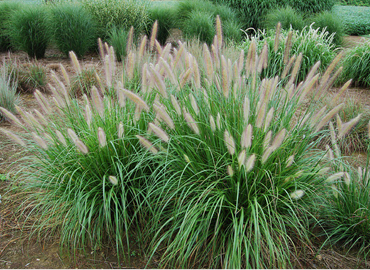
Asked what’s coming down the pipeline at Emerald Coast Growers, Ballard states: “We are always looking to provide the most current breeding and addressing any issues that arise for the grower and the consumer.”
For more: ecgrowers.com/plant-collections/infertile-grasses/

Explore the December 2023 Issue
Check out more from this issue and find your next story to read.
Latest from Nursery Management
- SaniDate WTO receives EPA registration to control foodborne bacterial pathogens in irrigation water
- Peter Orum, founder of Midwest Groundcovers, passes away at 82
- MANTS 2025 encourages exhibitors to showcase new and innovative products
- Adaptability: a nursery necessity
- Star Roses and Plants launches redesigned website
- Star Roses and Plants wins awards from 2025 American Garden Rose Selections testing program
- Hairy bittercress (Cardamine hirsuta)
- USDA grant will expand resources for school orchards in New England





